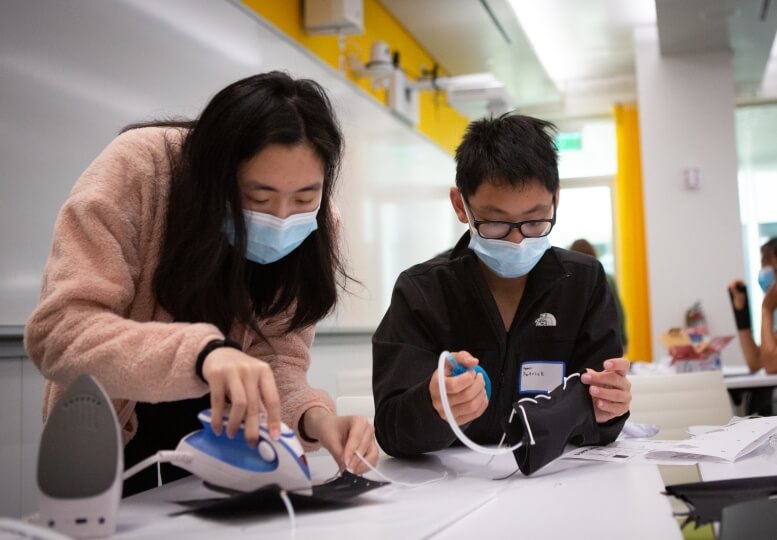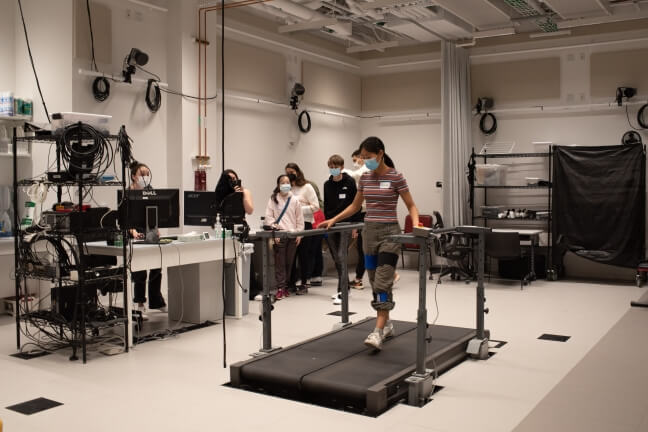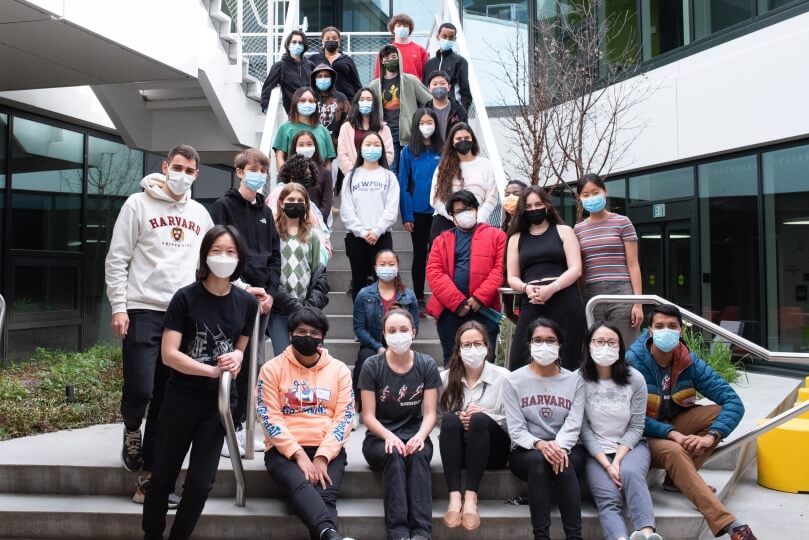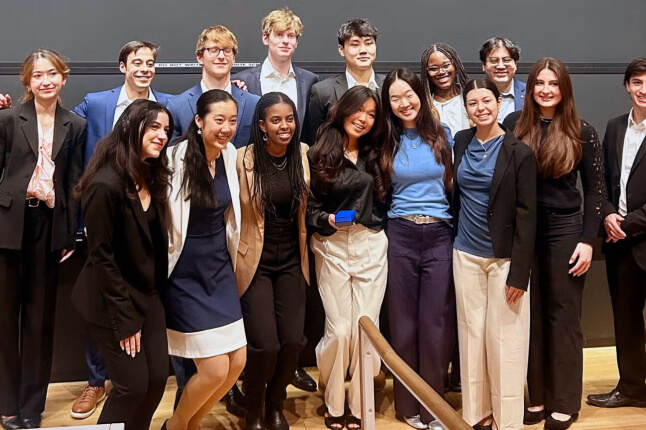News
What do your muscles do when you lift a heavy object? What happens in your brain when you go for a run? How do visual effects studios digitally capture human movement for use in a video game or movie?
Local high school students learned firsthand about all those concepts at the National Biomechanics Day hosted by the Harvard John A. Paulson School of Engineering and Applied Sciences (SEAS) at the Science and Engineering Complex. The program was organized by researchers in the Harvard Biodesign Lab, led by Conor J. Walsh, Paul A. Maeder Professor of Engineering and Applied Sciences at SEAS.
“I was really proud of our team that they were able to have the initiative to organize a jam-packed agenda that went over lots of different topics,” Walsh said.
High school students build their own inflatable wrist braces during National Biomechanics Day, hosted by the Harvard Biodesign Lab at the Science & Engineering Complex in Allston. (Harvard Biodesign Lab)
Krithika Swaminathan, a Ph.D. student in Walsh’s lab, was the lead organizer for the event, which was supported by a grant through the Women in Biomechanics Initiative. Despite some early concerns about turnout, more than twice as many students signed up as there were spaces available, with a final attendance of 27, more than half of whom identified as female or non-binary.
“We have quite a lot of cool measurement tools and really interesting ways of understanding human movement, so we thought it would be great to allow students in the area to come and experience what that looks like,” Swaminathan said. “A lot of us didn’t know much about these subjects before college or even graduate school, so it was something we felt would be nice to share with high schoolers.”
The event began with presentations by the Biodesign Lab team and Paul Devita, founder and director of the Biomechanics Initiative. After that, students got to experience hands-on biomechanics research, as they built their own inflatable wrist braces.
“If you have these inflatable pouches arranged in a smart way, you can dictate the way in which the body’s joints move,” Swaminathan said. “Despite the simplicity of the device, students were able to gain hands-on experience with a common actuation mechanism of soft wearable devices, the associated challenges, and the resultant changes in their biomechanics while wearing the inflated brace.”
From there, the event shifted to the SEC’s new Motion Capture Lab, where students got a chance to experience how motion capture works, test their muscle torque and activation through tools such as a dynamometer, experience electromyography and functional electrical stimulation of the muscles, learn about exosuits and robotic gloves developed to help in rehabilitation from a stroke or spinal cord injury, and learn about lower-cost tools that can make biomechanics research more accessible.
“We were showing them different ways you can use your phone or other wearable sensing mechanisms to determine range of motion and other clinically relevant metrics,” Swaminathan said.
Ph.D. student Krithika Swaminathan demonstrates one of the exosuits developed in the Harvard Biodesign Lab at National Biomechanics Day. (Harvard Biodesign Lab)
A high school student walks on a treadmill during National Biomechanics Day, hosted by the Harvard Biodesign Lab at the Science and Engineering Complex. (Harvard Biodesign Lab)
Students got a chance to see the lab’s tools in action, while also learning about some of the ethical issues involved in biomechanics research, which frequently requires testing on human subjects. The lab brought in members of the clinical research team from the Wyss Institute for Biologically Inspired Engineering, where Walsh is an associate faculty member, who introduced core principles of ethical human testing such as “beneficence,” which is the minimization of potential harm to the subjects; “respect for persons,” which is the preservation of their autonomy during testing; and “justice,” which refers to an equitable, non-exploitative approach to choosing subjects for a study.
“It was trying to get students to think about how, even as they see this awesome technology, there are still things they’d need to inform a participant about,” said Dionna Williams, Director of Clinical Research at the Wyss Institute. “It’s about getting informed consent and making sure participants know that their decision is completely voluntary. There has to be a level of autonomy, so there has to be protection for people who can’t make decisions for themselves, and making sure all the risks in a study are understood by those who can.”
Twenty-seven local high school students attended National Biomechanics Day, hosted by the Harvard Biodesign Lab at the Science & Engineering Complex in Allston. (Harvard Biodesign Lab)
The event concluded with a brainstorming session in which students designed their own potential biomechanics studies or devices. This incorporated both what they’d learned about biomechanics research tools, as well as their discussions about the ethics of research involving human subjects.
“We’re hoping that it instills in people a desire to explore more and try to see what parts of what we showed them are interesting to their future goals,” Swaminathan said. “It’s not really common, even in college, to have a biomechanics program. Knowing that the space exists allows students to seek it out and determine how to use its tools in their communities and careers.”
“It felt kind of like going back to normal, but because it’s a new building and new outreach activity, it also felt new at the same time,” Walsh said. “If I was a high school student doing something like this, it would just really open my eyes, and I’m sure it opened their eyes, about what people actually do in the areas of bioengineering and biomechanics.”
Topics: Academics, Allston Campus, Bioengineering, Materials Science & Mechanical Engineering
Cutting-edge science delivered direct to your inbox.
Join the Harvard SEAS mailing list.
Press Contact
Matt Goisman | mgoisman@g.harvard.edu






